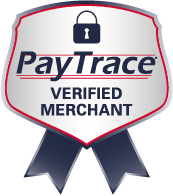With the way the Internet expands and evolves, new phrases and terms are coined just about every day. For the technology-challenged, this only makes the digital realm more confusing and intimidating. And yet, even as it grows more difficult to understand, online commerce is only growing more critical to the success of just about any business. Whether you seek brand exposure, lead generation or direct sales through online portals, almost every business–no matter what your industry–can benefit from building an online presence.
Today, that presence typically revolves around an inbound marketing strategy customized to serve your company’s needs. Yet too many companies and small business owners struggle to know where to begin. Some may only know the term “inbound marketing” but have no idea how it relates to their business goals.
For that reason, DBC Digital offers a quick, back-to-the-basics look at inbound marketing.
What is Inbound Marketing?
The best way to understand inbound marketing is to compare it to its counterpart in the physical world. In the real, brick-and-mortar world, customers are everywhere: commuting to work, going to dinner, watching TV. Marketing efforts are all built around trying to reach customers in the places they’re most likely to be found. TV commercials sell because there is a built-in audience, and billboards get rented because the exposure is guaranteed.
The Internet functions a little differently, though. Online, consumers aren’t just going through a daily routine, they’re actively seeking content. It could be the score of last night’s game, information about filing an insurance claim, research on local dentists. Ultimately, most online actions are intended to find content that is of value to the consumer.
A variety of tools now help consumers seek out that content. Google searches, social media and email are among the most common. Inbound marketing, then, is building the content those consumers are seeking, and optimizing the opportunities for those consumers to find it.
Think of inbound in terms of this age-old proverb: “If you build it, they will come.” Content–blog posts, static Web pages, contact info, etc.–is the solution being sought online. If companies don’t have content, they can’t get discovered. Inbound marketing builds this content, thereby establishing an online presence, and then makes sure consumers have easy ways of discovering that content.
How Does Inbound Differ From Traditional Marketing?
The basic difference between traditional and inbound marketing is the way in which consumers are reached, and in the way consumer appeal is created. In traditional marketing, you’re clamoring for attention–commercials need to be memorable, billboards need to have eye-appeal. With inbound marketing, though, you’ve already secured a key victory when consumers find your content and click on a link leading to your business. Instead of trying to stand out, your main objective at this point is to provide information and value to the consumer.
The main goal of securing a sale stays the same, but the strategy used is different. Inbound marketing works best when companies demonstrate their value and authority to a customer. Because consumers are already actively seeking out a solution to a problem they may have, the hard sell isn’t important. Inbound marketing’s main goal is to convince consumers that a given company can solve the problems they’re struggling with.
What are the Benefits of Running Inbound Marketing Campaigns?
Inbound marketing functions very similarly to how a sales representative might appeal to a consumer. The difference is in how much value a given piece of content can provide over time. A sales representative is often appealing to consumers on a one-to-one basis. The pitch gets repeated over and over again, at a time cost to that representative. Meanwhile, the employee can only actively work with one consumer at a time.
Inbound marketing content, on the other hand, can be used repeatedly, and without any extra cost to the business. Dozens of people can read a piece of content at the same time, essentially turning one blog post into three dozen sales pitches being run simultaneously. And perhaps best of all, simple data tracking tools like Google AdWords can help analyze the performance of pages, telling companies which efforts are working and which ones need to be fixed or retired.
Over time, an established inbound marketing strategy should become much more cost-efficient compared to traditional marketing strategies. Inbound can also reach new customers you never would have discovered otherwise. If you’re ready to invest in inbound marketing but still aren’t sure where to begin, contact DBC Digital and see how our services can help your business blossom.


